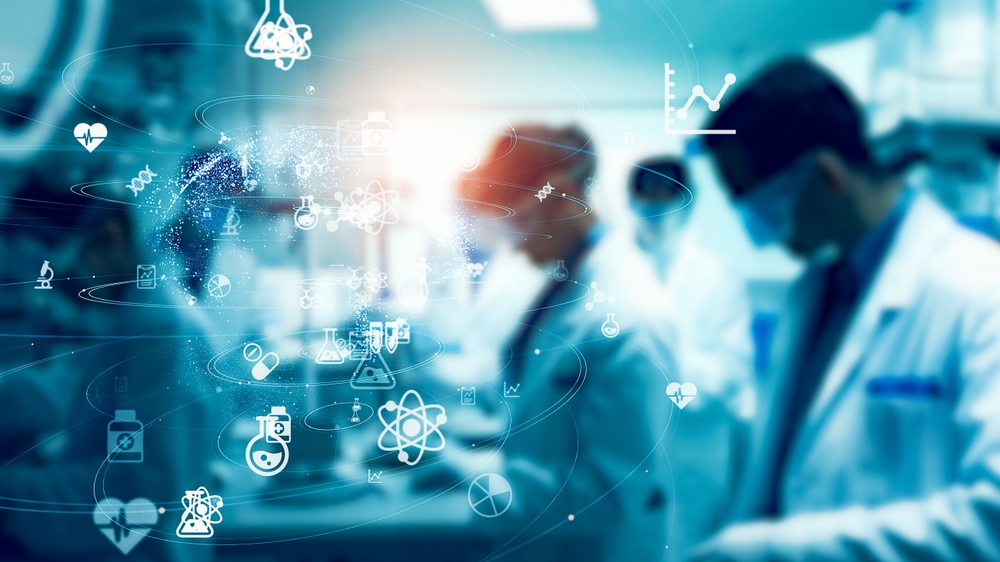In drug development, efficiency, accuracy, and consistency pave the way for faster market entry. Automating each stage of the drug development process, particularly preclinical bioanalysis, accelerates research and ensures quality test results.
Preclinical bioanalysis is a critical drug development process that involves measuring and analyzing biological samples from preclinical studies to evaluate a drug candidate’s safety, efficacy, and pharmacokinetics. It provides essential data that guides researchers in understanding how a drug behaves before it is tested in humans.
RELATED: 3 Must-Have Qualities of a Bioanalytical Method Development & Validation Partner
Manually conducting preclinical bioanalysis is considered inefficient due to several limitations, including:
- Time-consuming processes
- Increased risk of human error
- Limited throughput
- Reproducibility issues
- Inefficient data management
- Labor & resource intensive
Testing automation helps overcome these limitations, boosting lab throughput, precision, and reproducibility.
RELATED: How Bioanalytical Laboratory Automation Improves Timelines and Accuracy
Labs can automate the stages of preclinical bioanalysis to expedite drug development. This ensures a candidate can make it to the market sooner, saving time and money. Here are five ways preclinical bioanalysis can be automated.
5 Ways You Can Automate Preclinical Bioanalysis
1. Automated Liquid Handling Systems
Automated liquid handling systems use robotic platforms to handle sample addition, gradient dilution, and liquid distribution.
RELATED: 3 Benefits of In Vitro ADME Testing Automation
In preclinical bioanalysis, these systems enhance efficiency and throughput by processing multiple samples simultaneously, reducing preparation and analysis time compared to manual methods. They minimize human error, ensuring reliable and reproducible results critical for precise quantification.
By automating liquid handling steps, these systems optimize productivity, allowing researchers to focus on analyzing the results.
2. Robotic Sample Preparation
Robotic sample preparation automates high-precision tasks like pipetting, mixing, diluting, and transferring liquids. Using robotic arms and specialized tools, these systems minimize manual intervention and human error, ensuring consistent and standardized sample handling—crucial for reproducible results in preclinical bioanalysis.
These systems also process multiple samples simultaneously, reducing turnaround times and enabling high-throughput screening and large-scale biomarker analyses. This capability accelerates research processes, especially in studies with substantial sample volumes.
Robotic sample preparation ensures accurate and reliable analytical measurements by maintaining consistent handling and preparation conditions. This consistency is essential for obtaining dependable data and making informed decisions in preclinical development. Automated systems improve precision, reduce variability, create a detailed audit trail that can be useful for troubleshooting and investigations, and elevate the overall quality and productivity of the bioanalysis process.
3. Automated Analytical Instrumentation
Automated analytical instrumentation uses advanced technologies, such as spectrometry, chromatography, and immunoassays, to detect, quantify, and analyze biomolecules and analytes efficiently.
These automated systems process diverse samples and perform complex procedures swiftly and consistently, reducing turnaround times and boosting diagnostic testing efficiency.
Additionally, they improve precision and reproducibility by minimizing manual errors and ensuring consistent results across samples. Automated systems also include software for data processing, analysis, and reporting, speeding up result interpretation, enhancing data integrity, and ensuring regulatory compliance.
4. High Throughput Screening Platforms
High throughput screening (HTS) platforms are automated systems that rapidly test numerous compounds or samples against biological targets. They are also very useful in developing bioanalytical methods, screening different conditions, and maintaining uninterrupted workflows, saving scientists valuable time. These platforms integrate advanced robotics, liquid handling systems, and analytical instruments to efficiently process thousands to millions of samples in a short timeframe. HTS is essential in drug discovery, molecular diagnostics, and biomarker identification.
HTS platforms accelerate screening potential drug candidates or biomarkers by automating tasks like compound handling, sample preparation, and data acquisition. This automation significantly reduces the time and resources needed, allowing researchers to pursue other candidates or projects.
Like robotic sample preparation tools, these HTS platforms simultaneously test multiple parameters, generating extensive data on compound interactions, biomarker levels, and disease markers. This robust data collection improves the likelihood of identifying clinically relevant targets. Advanced data reporting software, when integrated with HTS platforms, aids informed decision-making, especially in preclinical bioanalysis.
5. Laboratory Information Management System
A Laboratory Information Management System (LIMS) is a software platform that streamlines and manages lab operations, data, and sample workflows. A LIMS stores, tracks, and analyzes data from processes like sample handling, testing, and analysis, acting as a centralized repository.
Using a LIMS, researchers can track samples from collection to analysis and storage, ensuring traceability and maintaining integrity. LIMS seamlessly integrates with analytical instruments for real-time data capture, facilitating faster decision-making in research and development.
LIMS also ensures compliance with regulatory standards by enforcing data integrity, audit trails, and version control. It supports audit documentation and traceability, adhering to Good Laboratory Practice (GLP) and other guidelines.
Conclusion
Preclinical bioanalysis automation expedites drug development and enhances formulation quality by increasing efficiency, accuracy, and consistency. Automated systems handle multiple samples simultaneously, reducing the time and labor intensity. This ensures more reliable and reproducible data, instilling a sense of trust and confidence in the results.
Standardized processes lead to consistent results across studies, which is crucial for regulatory compliance. Real-time data analysis and machine learning integration also optimize formulations and predict outcomes, streamlining decision-making and reducing manual data handling.
WuXi AppTec provides comprehensive, fully automated preclinical bioanalytical services tailored to your research programs. Speak to one of Wuxi AppTec’s experts or explore our bioanalytical solutions today.
As a global company with operations across Asia, Europe, and North America, WuXi AppTec provides a broad portfolio of R&D and manufacturing services that enable the global pharmaceutical and life sciences industry to advance discoveries and deliver groundbreaking treatments to patients. Through its unique business models, WuXi AppTec’s integrated, end-to-end services include chemistry drug CRDMO (Contract Research, Development and Manufacturing Organization), biology discovery, preclinical testing and clinical research services, helping customers improve the productivity of advancing healthcare products through cost-effective and efficient solutions. WuXi AppTec received an AA ESG rating from MSCI for the fourth consecutive year in 2024 and its open-access platform is enabling around 6,000 customers from over 30 countries to improve the health of those in need – and to realize the vision that “every drug can be made and every disease can be treated.”


